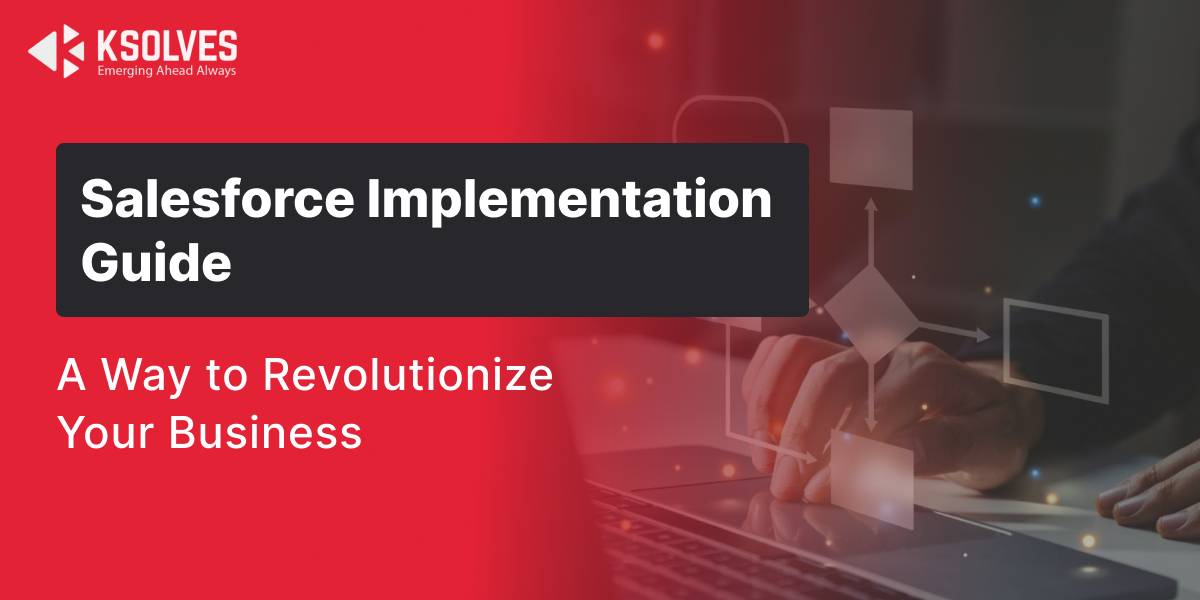Boost Your Sales Calls: Techniques for Better Engagement
Salesforce
5 MIN READ
June 13, 2024
![]()

Have you done your marketing research and qualified prospects? Going for Sales calls? But you should hold on because it is not just about delivering a quick pitch. Successful sales calls should be tailored exactly to address the key pain points of your prospects.
In this blog, we are discussing the key points that help you get the most out of your sales calls.
What is a Sales Call?
A sales call is a strategic communication where a salesperson engages with a potential or existing customer to discuss products or services with the aim of advancing the sales process. These calls can be conducted over the phone, via video conferencing, or in person. The primary motive of a sales call is to build relationships, understand customer needs, address objections, and move toward closing a sale.
What Steps Should You Follow for an Effective Sales Call?
Let’s start with the steps that should be followed before the sales call.
1. Prepare your Sales Call before the Actual call
Before picking up the phone, you need to make proper preparations that lay the groundwork for a successful sales call. The sales reps should research the prospect or client to get valuable insights into their needs, pain points, and preferences. You can grab the information from different resources, such as LinkedIn profiles, company websites, and news articles, to gather relevant information. You should be clear about what needs to be covered in the call. When it comes to large companies, mostly legal teams and high-level executives are involved in decisions before making the final purchase. It is good to send the contract copy or prepared quotes to all decision-makers to review before you call.
2. Tailored Presentations: One Size Does Not Fit All
In sales calls, buyers always expect that the sales rep should act like a trusted advisor and have done complete product research before scheduling the call. It means sales reps should understand the key needs of prospects to prove them a valuable solution. It means a generic sales pitch doesn’t position the product as a solution to the prospect’s unique problems. It is better to customize your approach according to the unique needs and preferences of each prospect. Create tailored presentations that focus on their needs and highlight relevant case studies or success stories to illustrate the value of your offering in a context familiar to them. Customizing your pitch increases engagement and resonates more deeply with the prospect.
3. Prepare your Demo
Discussing your product or service as a solution has its limits. If you want to showcase how your product meets the prospect’s needs, then you should focus on presenting a video or interactive demo during the sales call. Create a short and meaningful demo video, not more than 10 minutes, to share your product knowledge. Additionally, while presenting the demo, make sure you are prepared to highlight specific features that address the prospect’s unique requirements. This targeted approach helps in effectively showcasing the product’s value.
4. Proactive Handling of Objections
Successful sales calls often involve addressing objections skillfully. Despite thorough preparation and offering a tailored solution, objections can still arise. Therefore, you need to be prepared for potential objections that your prospect might raise and prepare effective responses in advance. During your preparation phase, consider common objections, such as pricing concerns, or doubts regarding implementation. Craft responses that not only address these objections but also reaffirm the value and benefits of your offering. By proactively handling objections during the sales call, you demonstrate confidence and expertise, reassuring the prospect and maintaining the momentum towards a successful close.
Things to Consider To Make a Successful Sales Call
1. Always Record your Call
If you want to optimize your sales performance, then don’t underestimate the power of call recording and review. To gain valuable insights and refine your sales approach, make sure that every call is recorded using your phone or preferred video conferencing platform. After each call, give yourself dedicated time to review the recording meticulously. Identify any objections you may have missed or insights you could have incorporated. Additionally, consider utilizing tools like Einstein Conversation Insights, which can help analyze commonly used keywords and your speaking versus listening ratio. Moreover, don’t hesitate to share these recordings with your manager or colleagues to solicit constructive feedback. Remember, each call serves as a learning opportunity—a chance to enhance your skills, refine your pitch, and ultimately drive sales success.
2. Start with a Friendly Yet Professional Sales Greeting
When initiating a sales call, it’s essential to strike the right balance with your greeting. While it’s crucial to establish rapport and create a comfortable atmosphere, it’s equally important not to come across as overly familiar or insincere. You should start with a friendly greeting that encourages positive conversation. It demonstrates professionalism and shows that you value the prospect’s time. However, it’s essential to avoid diving into your sales pitch too quickly. Building rapport takes time, and rushing this process can undermine your efforts.
3. Confirming Updates: Ensure Your Pitch Stays Relevant
In the fast-paced business world, change is constant. To ensure your well-prepared pitch aligns with your prospect’s current needs, start by asking, “Has anything changed since the last time we talked?” This straightforward question keeps you informed about any recent changes or shifts in their priorities. By confirming any changes upfront, you can adjust your talking points to address their immediate concerns. If significant changes have occurred, this question provides an opportunity to reschedule the call, giving you time to prepare a new, tailored pitch. This approach ensures your efforts remain relevant and effective, ultimately increasing your chances of a successful sales interaction.
4. Setup your Call Agenda and Expectations
Once you have confirmed that your prospect’s circumstances haven’t significantly changed, it’s important to outline the agenda for the call. Clearly setting expectations ensures that the prospect knows what to anticipate and helps maintain a structured and focused conversation.
Here are some pointers that should be discussed with prospects:
1. Welcome: Begin with a greeting and a quick review of the prospect’s situation.
2. Agenda: Outline the key points you’ll cover during the meeting.
3. Review Prospect Needs: Confirm and reiterate the prospect’s pain points.
4. Product Overview: Introduce the features and functions of your product or service.
5. Product Solutions: Explain how your product specifically addresses the prospect’s pain points.
6. Demo: Showcase the product and highlight its problem-solving capabilities.
7. Questions: Offer additional information as needed and address any objections.
8. Next Steps: Outline the action items and provide a timeline for closing the deal. By setting a clear agenda, you help the prospect understand the flow of the conversation and ensure that all critical topics are covered efficiently.
Emphasize Pain Points
Reiterating your prospect’s pain points during the call is crucial for a successful sales conversation. Doing so accomplishes two important objectives: first, it demonstrates that you have listened carefully and are prioritizing their needs. Secondly, it lays the groundwork for presenting your product as the solution. This approach also helps to reaffirm their concerns, creating a natural transition on how your product can address and resolve these specific pain points. Emphasizing their needs ensures that the conversation stays focused on providing relevant solutions, increasing the likelihood of a successful outcome.
Crafting Value-Centric Sales Pitches
When pitching a product, emphasize its value over mere features. It is good to focus more on addressing the prospect’s pain points and enhancing their needs. By leveraging emotional triggers like pain and pleasure, the pitch can resonate more deeply. For instance, you are selling travel insurance. Highlight the peace of mind it provides by safeguarding investments against unforeseen disruptions like inclement weather. Furthermore, mention perks like refunds or exclusive discounts, adding an extra layer of pleasure. By intertwining solutions with product benefits, you’re not just selling a service; you’re offering peace and enjoyment.
Highlight Your Unique Selling Proposition
In the competitive landscape of product sales, standing out is paramount. While addressing customer needs is crucial, it’s equally important to show what sets your product apart from the competition. By thoroughly researching your competitors, you will be able to pinpoint and communicate clear differentiators that make your offering stand out from others. This strategic approach nudges prospects to recognize the unique value proposition of your product, ultimately securing a stronger position in the market.
Optimize Sales Communication with Positive Language
When it comes to sales, the choice of words can make all the difference. Employing empathetic, value-driven, and positive language is not just beneficial—it’s essential for fostering trust and emotional engagement with prospects. By framing discussions with terms like “investment” instead of “payment,” you shift the focus from debt to ownership and opportunity, resonating more positively with potential buyers. Similarly, using terms like “benefit,” “guarantee,” and “easy” further solidifies the sense of value and reassurance, facilitating smoother sales processes and securing buy-in from prospects.
Wrapping Up
One powerful tool that can transform your sales calls is the Salesforce Sales Cloud. This robust platform offers comprehensive features to streamline your sales process, from lead management and opportunity tracking to automated workflows and advanced analytics. With Salesforce Sales Cloud, you can efficiently track and manage leads, enhance productivity by automating routine tasks, gain valuable insights through real-time data and analytics, boost collaboration with centralized data and tools, and personalize customer interactions with detailed customer insights.
At Ksolves, we specialize in helping businesses harness the full potential of the Salesforce Sales Cloud. Our expert team offers end-to-end Salesforce consulting and implementation services, ensuring a seamless transition and maximum return on investment. We tailor Salesforce implementations to meet your unique business needs and provide ongoing support and training to help your team leverage Salesforce effectively. By partnering with Ksolves, you can enhance your sales processes, improve team productivity, and ultimately drive greater sales success, turning every sales call into a valuable opportunity for growth.







AUTHOR
Salesforce
Md. Asad Khan, an expert Technical Project Manager at Ksolves, who is a certified Salesforce architect at Ksolves, brings 7+ years of experience. He specializes in FSL, B2B, Service & Sales Cloud, and Non-profit cloud, excelling in APEX, Aura Component Framework, Lightning Components, Triggers, Visualforce, and creating insightful dashboards and reports.
Share with